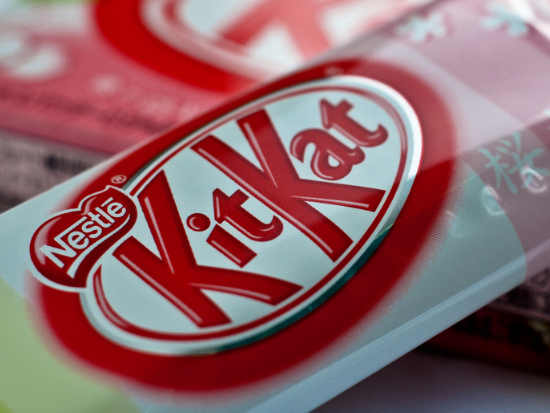Nestlé's approach to sustainable agriculture

Nestle Kit Kat image by Nomadic Lass via Flickr.
Hans Joehr, Nestlé’s corporate head of agriculture, explains the impetus behind the company’s sustainable agriculture initiative and the wisdom of not having a single sustainability officer in this Q&A with Nina Kruschwitz from MIT Sloan Management Review.
Nina Kruschwitz:Nestlé has become so prominent in the food industry for its work around sustainability over the last decade, and you have been in your role that entire time. Tell us about the transformation.
Hans Joehr:We started 12 years ago with our sustainable agriculture initiative at Nestlé, and then two years later we launched this sustainable agriculture initiative platform within the food industry, SAI Platform, which has become the most recognized industry initiative on sustainable sourcing and sustainable agriculture worldwide. There are about 14 members.
SAI Platform is mainly a very simple thing, because everything that is quite simple really creates an impact. All the very complicated things, people do not understand over the long term, and then there is no traction and no continuity.
Instead, SAI Platform was created with a very simple idea of putting principles and practices together on sustainable agriculture for certain crops in order to address environmental, societal and economical topics around agriculture production systems.
So we have put these principles and practices together, and now we are sharing this in a pre-competitive way with all these member companies. And in fact, we started that together with Danone and Unilever exactly 10 years ago in May 2003. Nowadays, we have all the confidence, given that all our principles and practices are field-tested and are continuously being improved. And it’s not about labels and certification systems and schemes only. It’s about real practices.
NK: Can you take us back 10 years -- what prompted the formation of that organization? What problem were you trying to address by forming this platform?
HJ:We all have the same problems of quality, of scarcity, of cross-border issues from child labor to pesticide residues to contaminants. A lot of things are linked to agriculture practices that may end up, at the end of the day, in your raw materials and finally in your branded product.
So we had a number of issues that were hitting everybody in a negative way. We said, “Well, we have an exposure to the same topics, what do we do?” Instead of each one of us going out and trying to fix it, we looked at whether there was something we could do together, on a voluntary basis. And then we looked into these principles and practices and procedures.
NK: Tell me about hazard analysis and critical control points.
HJ:We’re looking at the production system in agriculture and we see where are the risks, for instance, on land use, on pollution, on waste and biodiversity, or on doing something wrong with natural resources.
[We are practicing] sustainable intensification of agricultural production systems. It’s a very systematic process approach to drive sustainable agriculture. At Nestlé, we do that with many hundreds of thousands of farmers.
NK: Can you give us an example?
HJ:我们的一个合作伙伴,iDE柬埔寨、火车农村布鲁里溃疡siness people to become farmer business advisors. Those advisors then work with small-scale farmers to help spread a better understanding of good farming practices.
Our investment helped iDE Cambodia nearly double the number of advisors, so that now more than 100 are working with about 15,000 farmers. The program is being extended to Mozambique and Ghana. For this work, iDE Cambodia was the winner of our first Nestlé Prize in Creating Shared Value.
NK: Some companies have a vice president of sustainability, some have advisory boards, some have a CEO who drives the efforts. What’s the big picture for Nestlé?
HJ:We havesustainability in all of our operations. We don’t even have a sustainability officer. We believe that you can’t make good progress by using a “doctor” prescribing to everyone what they should do.
This is where this approach ofcreating shared valuereally gets highlighted. Wecreated this approachtogether with Michael Porter. Andcreating shared valueis not sharing created value. I say that because creating shared value, to our understanding, is the next step of corporate social responsibility approaches.
对于许多公司think about corporate social responsibility, when something goes wrong, a lot of people become extremely nervous and say, “Okay, who is going to fix it?” And then they write a check to the next NGO to fix it.
We said we do not want to have this. If something goes wrong in our company, then we fix it ourselves. So we have to embed sustainability as a clear role model of what we call the functional leadership of our organization. When we need to, we make a change in operations. That’s how we got to talking about sustainable sourcing and working with the farmers to get the raw materials into our supply chains to feed the factories.
We really make it happen and put it into the KPIs [key performance indicators] of everybody, from the shop floor to the top. It means that you have to engage with many, many, many people and you cannot just hire one guy called a sustainability officer.
This article is adapted from“Creating Shared Value at Nestlé”by Nina Kruschwitz, published Sept. 10 by MIT Sloan Management Review. The complete article is available athttp://mitsmr.com/1b24JJX.Copyright © Massachusetts Institute of Technology, 2013. All rights reserved.
Nestle Kit Kat image byNomadic Lassvia Flickr.




